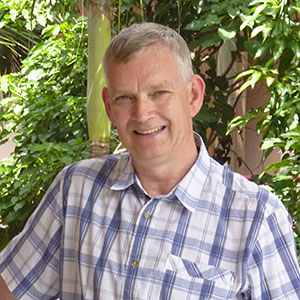Biography
For my PhD (Bristol University, 1983) I used ion-sensitive microelectrodes to investigate pH regulation in snail neurones, supervised by Dr RC Thomas. I was awarded a Royal Society Exchange Fellowship to work in Paris (ENS), mainly with Dr Alain Marty on the muscarinic response in rat lacrimal glands, but also did some single channel work and a characterisation of a novel calcium-activated chloride current.
I then switched direction towards hearing and the cochlea, doing a postdoc in Denver (UCHSC) with Dr Paul Fuchs following a short period in Bristol. We investigated the electrical resonance mechanism in chick cochlear hair cells.
With Andrew Crawford and Robert Fettiplace in Cambridge, we investigated the hair cell transduction mechanism in turtles. In 1990 I became a temporary lecturer in Physiology, Bristol, and two years later was awarded a Wellcome Trust postdoctoral fellowship to investigate the mechanism of efferent inhibition in cochlear outer hair cells.
This has been my principal research area ever since, although more recently this path has expanded to include neonatal inner hair cells. I was appointed as a lecturer on the Neuroscience course at Keele in its first year, 1996, and became Programme Director (2002-2013 and 2017 - 2020). I was a member of the editorial board of the Journal of Physiology (2004 – 2011) and a trustee and member of Council of the Physiological Society (2011-2015), including Chair of the Membership and Grants Committee. I was also Keele’s Physiological Society representative from 2017-2020. I retired at the end of 2020, and have honorary status until end of 2023.
Research and scholarship
My research area relates mainly to hearing and the cellular mechanisms involved. I am interested in the outer hair cells of the cochlea, and how they amplify the movements within the cochlea induced by sound. This mechanism provides us with our sensitive hearing - without it we'd have to shout!
The outer hair cells are controlled from centres in the brain stem, my main research concerns how this cholinergic efferent pathway works, and how it influences the physiology of the outer hair cells. During development this pathway transiently innervates the inner hair cells and appears to modulate their intrinsic electrical properties, producing different patterns of spiking activity along the cochlea. Together with Helen Kennedy (Bristol), we are investigating how the efferent neurotransmitter acetylcholine alters the cells electrical responses and whether there are differences between inner and outer hair cells that might provide clues about the underlying receptor mechanisms.
More recently I have been collaborating with David Furness and Anya Osborn (PhD student), and ex-colleague Doug Caruana (Aston) to assess ion channels in cochlear fibrocytes, from neonatal cells grown in culture on hydrogels and in excised portions of the spiral ligament. We want to know whether cultured fibrocytes show similar physiological responses to those within the spiral ligament, as a precursor to assessing whether an injection of cultured cells into the cochlea might represent a viable therapy against age-related hearing loss.
I have also collaborated with Divya Chari’s group here at Keele, looking at how different cell culture techniques affect neuronal physiology and whether electrical stimulation can improve neurite outgrowth in cells grown on collagen hydrogels.
Publications
School of Life Sciences,
Huxley Building,
Keele University,
Staffordshire,
ST5 5BG
Tel: +44 (0) 1782 734414
Enquiries:
Tel: +44 (0) 1782 734414
Email: lifesciences.office@keele.ac.uk


